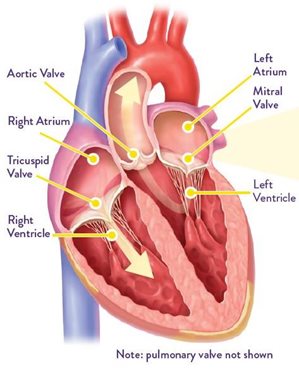Understanding your heart and mitral valve
 Let’s talk about how your heart works. Your heart beats thousands of times per day, pumping dozens of gallons of blood each hour. It pumps blood through your lungs, where the blood is replenished with oxygen, and pumps it back out to the rest of your body.
Let’s talk about how your heart works. Your heart beats thousands of times per day, pumping dozens of gallons of blood each hour. It pumps blood through your lungs, where the blood is replenished with oxygen, and pumps it back out to the rest of your body.
The heart has four chambers; the upper two chambers are called the left atrium and right atrium, and the lower two are called the left ventricle and right ventricle.
Heart valves are the doorways between these chambers. They open to let blood pass from one chamber to the next, closing quickly between heartbeats so blood does not flow backward.

Definition of Mitral Valve
The mitral valve is the valve between the left atrium and left ventricle of your heart. In a normally functioning mitral valve, blood flows in a single direction between the left atrium and left ventricle. When your mitral valve’s two leaflets (or flaps) do not close properly, some blood flows backward through the valve back into the left atrium. This is called mitral regurgitation (or MR).
To compensate and keep blood flowing through the body, the left ventricle pumps harder. This strain can lead to other heart complications.